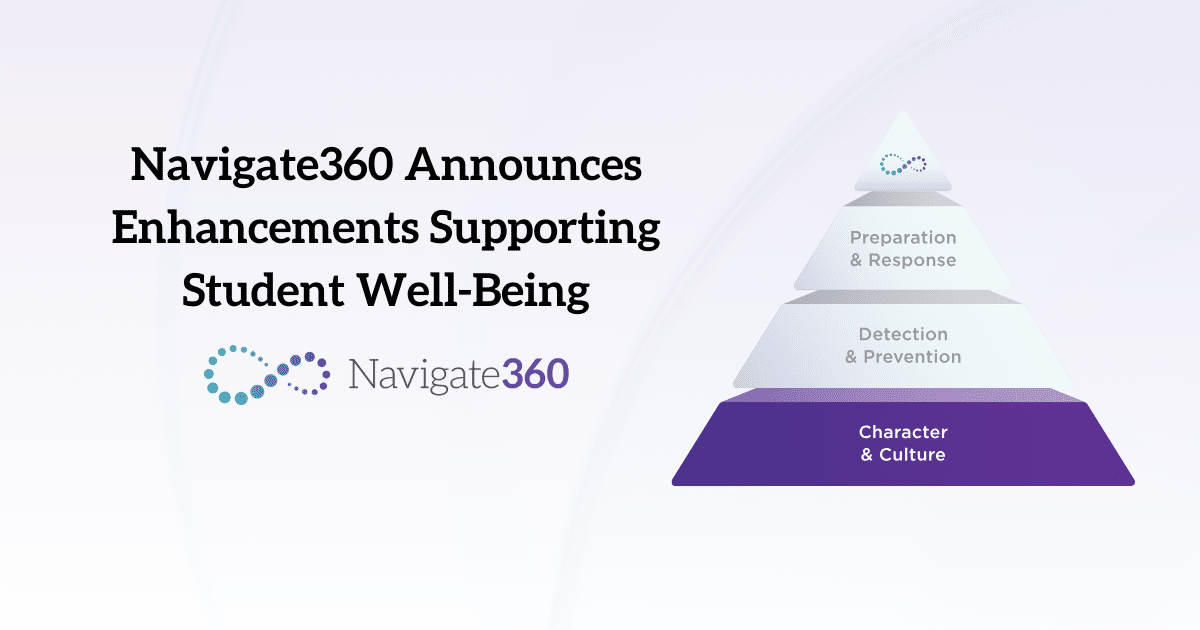Support At-Risk Students to Ensure Schoolwide Safety & Student Wellbeing
Hot Topics: Behavioral Threat Assessment in Schools
Watch as our panelists discuss behavioral threat assessment and proactive strategies for violence prevention and early intervention.
Given today’s disturbing rise in school violence, effective school safety initiatives are paramount. School districts must strive to implement research-based practices and tools that can help prevent threats of violence from escalating. Behavioral threat assessments that involve multidisciplinary teams help schools intervene and address threats in a way that reduces bias and traditional punishment. Ultimately, this helps to improve students’ social and emotional adjustment and keep them off a path of violence.
Here, we speak to Dr. Dewey Cornell, a forensic clinical psychologist and professor of education who developed the leading evidence-based school behavioral threat assessment model known as the Comprehensive School Threat Assessment Guidelines (CSTAG). We will learn about preventing youth violence and improving school climate with behavioral threat assessment and management.
How does the CSTAG model differ from other behavioral threat assessment models?
Threat assessment models originated with the Secret Service in its efforts to stop terrorists and assassins. However, in a school setting, the model is used to identify and support students at risk. Behavioral threat assessment in schools supports the whole child and promotes a culture of safety.
“Threat assessment procedures need to be calibrated to our population and our educational setting. And, keep in mind that as educators we are not only trying to prevent an attack, like the Secret Service. We have additional responsibilities as educators. We want to take care of our students, help them grow and be successful. So, our job is more complex,” says Dr. Cornell.
Considering this, it is important to acknowledge common problems kids contend with such as bullying, dating, social media pressures and the general stressors of growing up. Kids can also be impulsive and immature, but this behavior doesn’t mean they want to cause harm. The key is separating students who are simply immature from those who pose a serious threat to others.
Why is training important for a behavioral threat assessment team?
The most common approach to school safety is zero-tolerance, where a problematic student is removed from school and sent home with instructions to obtain an evaluation from professionals in the community in order for the child to return to school. However, this strategy is not effective. The Secret Service studies of school shootings found that suspending a student from school can often backfire. The school loses contact with the student, who can become more alienated and angrier, and is then able to plan and prepare an attack.
“School safety is obviously a serious matter, and when a student threatens violence, we want to make good decisions. We don’t want to overreact to student misbehavior that is not serious, and we don’t want to underreact to truly serious threats,” says Dr. Cornell.
An alternative to a zero-tolerance approach involves implementing a behavioral threat assessment program in which multidisciplinary teams can properly evaluate student behavior and prevent school violence. These teams should include trained administrators, teachers and law enforcement and mental health professionals. CSTAG training provides an evidence-based program that gets team members on the same page by increasing their knowledge of threat assessment as well as the motivation to use threat assessment.
What does BTA training look like?
You don’t have to be a mental health professional to participate in behavioral threat assessment — CTSAG training takes about one day. The first half of training looks at the nature and prevalence of school violence, the rationale for a threat assessment approach, the basic principles of prevention and assessment and application of the CSTAG model.
After covering the foundations of CSTAG, the training involves practice with case exercises. The BTA team works together on cases while going through the CSTAG decision tree.
What is the goal of a behavioral threat assessment?
When analyzing a student’s actions, it’s critical to get to the root of the problem and see if the individual has the intent and capability to follow through with a threat. This leads to the question: Can a behavioral threat assessment help predict violence?
Predicting violence with accuracy is difficult. Therefore, that is not the overall goal. “Prevention does not require prediction,” says Dr. Cornell. Instead, the overall goal is to reduce risk factors and prevent violence from occurring. Threat assessment teams are concerned with reducing the risk of violence, even if they cannot predict violence. This is the public-h health approach that is widely used to prevent unpredictable events, from motor vehicle accidents to cancer. We might not be able predict certain events, but we can identify risk factors and take appropriate preventive measures.
Our Guide to Behavioral Threat Assessment CSTAG Training
Learn how we can help you provide your team with the knowledge and skills to identify, assess and support students of concern.
Building a Culture of Safety Requires a Holistic Approach
Keeping students off the pathway to violence and on the pathway to wellness is complicated, but you are not alone. As a trusted school safety partner, we know that it takes a community of support to care for students’ physical, mental and emotional wellbeing.
With an ecosystem of holistic safety and wellness in place, K-12 schools are in a better position to promote the long-term success of students and teachers. Contact us today to learn more about the steps you can take to support the mental and physical wellbeing of your students.




